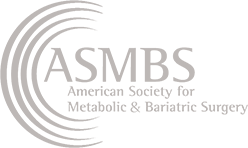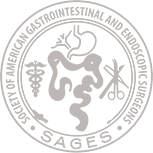What Does the Gallbladder Do?
The gallbladder is an organ that is tucked underneath the right side of the liver and connected to the bile duct via a narrow tube called the cystic duct. It serves as a reservoir for bile.
The liver makes approximately 1 liter (or about 2 pints) of a golden-brown fluid daily called bile. Bile is necessary to absorb fats and fat-soluble vitamins (A, D, E and K) from the intestine. It also serves to eliminate/transport fat-soluble products such as bilirubin (blood pigment — a hemoglobin breakdown product), bile salts, cholesterol, etc.
Bile from the liver is transported to the duodenum (the first portion of the intestine) by a tube called the bile duct (also known as common bile duct or CBD). A valve (sphincter of Odi) at the end of the bile duct regulates the entry of bile into the duodenum. This valve typically remains closed and opens only when food is within the duodenum in response to chemical signals (cholecystokinin). When this valve is closed, the bile backs up and is stored in the gallbladder.
The cells lining the inner surface of the gallbladder concentrate bile by extracting fluid from it, converting it to a thick (viscid) oily substance. When food enters the duodenum, the same chemical signals that open the sphincter of Odi also cause the gallbladder to contract thereby squirting concentrated bile into the duodenum.
Occasionally in the process of concentrating the bile, the cells may extract too much fluid from the bile, causing an imbalance of the solutes within the bile — bile salts, cholesterol, calcium salt of bilirubin — which precipitate and form sludge. This sludge sometimes turns into gallstones (Cholelithiasis). Why some individuals develop gallstones while others do not is unknown, but risk factors include being female, 40 years of age or older, pregnancy and obesity.
Symptoms and Diagnosis
Gallstones can block the flow of bile from the gallbladder into the bile duct by acting like a ball valve within the narrow cystic duct. This can result in abdominal pain (biliary colic) or inflammation (acute or chronic cholecystitis). Symptoms range from indigestion or “heartburn” to sharp upper abdominal pain either in the pit of the stomach or on the right side of the abdomen that radiates to the back, as well as nausea, vomiting and occasionally fever. However, not all patients with gallstones exhibit symptoms.
The best way to find gallstones is to perform an abdominal ultrasound. Patients with gallbladder-type symptoms who don’t have stones may have chronic gallbladder inflammation (chronic acalculous cholecystitis); this is diagnosed with a special test called a HIDA scan — a nuclear medicine study that can help determine whether the gallbladder is functioning normally or not (biliary dyskinesia).
Gallbladder Removal Surgery
Gallbladder removal (gallstones cholecystectomy) is necessary for some patients with gallstones, particularly those suffering symptoms. This is a type of general surgery best performed in an elective fashion to avoid life-threatening complications.
Small stone(s) can occasionally slip into bile duct obstructing it (Bile duct/CBD stone) – causing abdominal pain, nausea, and yellowing of the skin (jaundice). Bile duct stones can sometimes block the tube that drains the pancreas (pancreatic duct), causing severe upper abdominal pain and inflammation (pancreatitis), which may be life-threatening. When this occurs, a special Endoscopic Retrograde Cholangio-Pancreatography (ERCP) procedure is performed to remove stones blocking the bile and/or pancreatic duct without ERCP surgery.
Weight loss of any kind can predispose people to have gallbladder problems – hence it is not uncommon to remove the gallbladder concurrently during weight loss (bariatric) surgery to prevent this problem.

Trusted Gallbladder and Gallstone Removal Surgery in Seattle
Dr. Srikanth is an American Board of Surgery-certified surgeon who has performed over a thousand laparoscopic procedures for partial gallbladder removal in Seattle, enabling faster recovery with minimal discomfort. Most patients can be discharged the same day or within 24 hours of a gallstone removal procedure.






